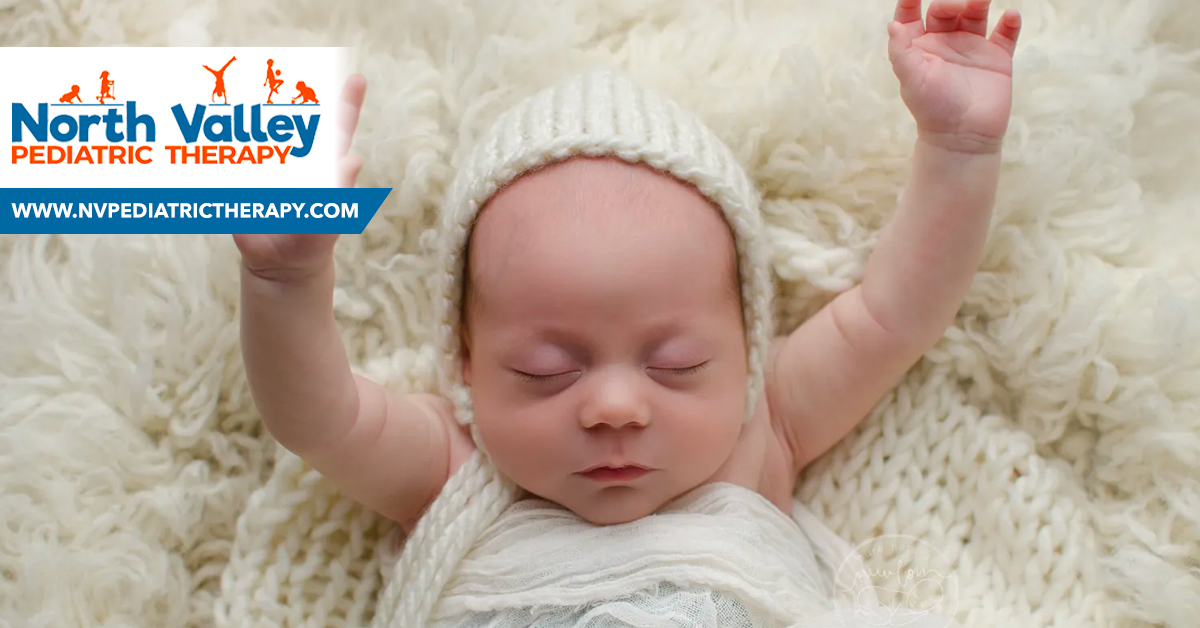Torticollis is an abnormal position of the head and neck and is most common in babies. It is an indication that one of the muscles in the neck (typically the sternocleidomastoid) is tight. Torticollis limits the ability for your baby to move his/her head freely to see, hear, and interact with their environment. Due to these limitations, it may lead to delayed body awareness, weakness, and difficulties with balance and bilateral coordination through developmental stages.
Common signs of Torticollis
Always looking in the same direction
You may notice your baby always turns their head to one side when you lay them down on their back. They may even fuss or cry when you attempt to turn their head to the opposite direction, ultimately returning to their preferred side.
- Always tilting head to one side
You might notice your baby prefers to have their head tilted to one side, with that ear being closer to the same side shoulder. This may be the case while laying on their back, or even when sitting.
- Difficulties during feeding
If breastfed, it may be more difficult feeding your baby on a certain side, often resulting in possible fussing or crying. If your baby is bottle fed, you may notice they have more difficulty feeding while being cradled in one arm vs. the other.
- Flattening of the head (plagiocephaly)
A baby’s skull does not fully fuse and harden until months after birth. This means the bones in the head are still soft and can change shape. If your baby prefers to lay with their head in the same position, the head begins flattening where it is in contact with the ground.
Ways to help prevent Torticollis
- Alternate feeding positions.
Changing which breast you use or arm you hold your baby will allow for him/her to change the direction they will be rotating towards.
- Alternate sleeping positions in crib and while on changing table.
By changing the side in which your baby’s head is at-will encourage them to mix up the direction they are looking.
- Alternate the side toys are hung in the car seat, crib, and while laying on the floor.
Hanging toys are great for developing visual tracking. By placing them in different places, it encourages your baby to move their head from side to side.
- Tummy Time
Tummy time is a great exercise to strengthen and stretch the neck muscles. It also allows your baby to spend time on the floor without constant pressure on the back of their head. Talk, sing, or use toys to encourage your baby to turn their head in both directions while during tummy time!
Stretching Techniques
The best place to perform these stretches would be on a carpeted floor because the baby will be placed on their back. It is important to note that your baby will likely not enjoy these stretches initially, and may possibly attempt to wiggle out of the position or begin to cry. It will take time for them to get used to it, so just start with a few seconds to build up a tolerance, and then progressively hold the stretch for a longer period of time, up to 30 seconds. If tolerable, you can hold the football stretch even longer, as tolerated. Repeat these stretches 2-4x each during a single stretching bout and complete 3-4 bouts per day.
-
Side bending
For right torticollis (head tilts to the right): Place your right hand on top of the right side of your baby’s head. Hold their left shoulder down with your left hand and slowly bring their left ear towards their left shoulder.
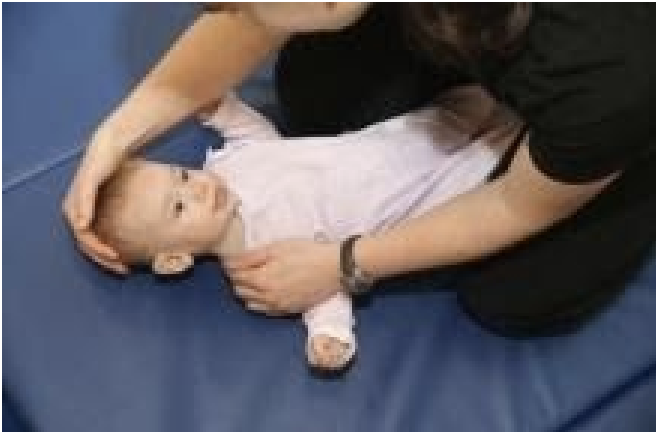
For left torticollis (head tilts to the left): Place your left hand on top of the left side of your baby’s head. Hold their right shoulder down with your right hand and slowly bring their right ear towards their right shoulder.
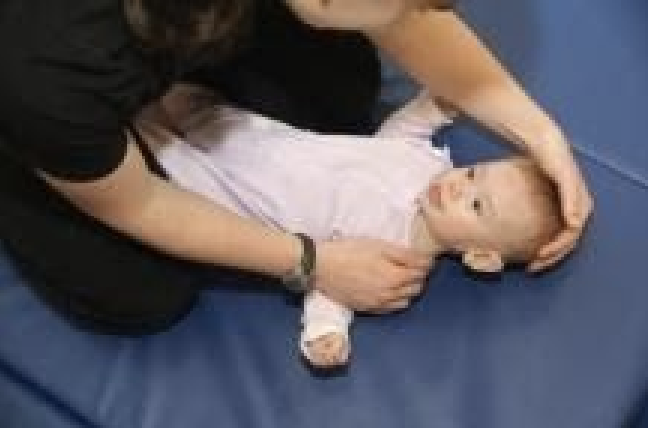
-
Rotation
For right torticollis (head rotates to the left): Place your right hand on their left shoulder and cup the baby’s head with your left hand. Slowly turn their head so that their chin moves to their right shoulder.
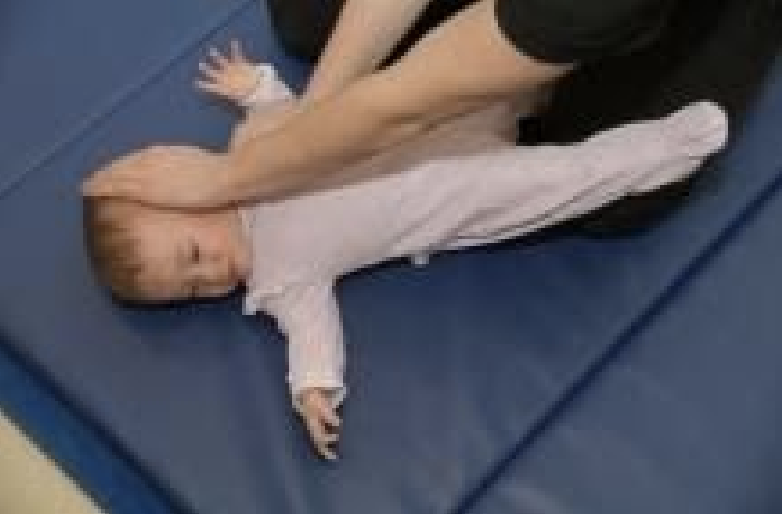
For left torticollis (head rotates to the right: Place your left hand on their right shoulder and cup the baby’s head with your right hand. Slowly turn their head so that their chin moves to their left shoulder
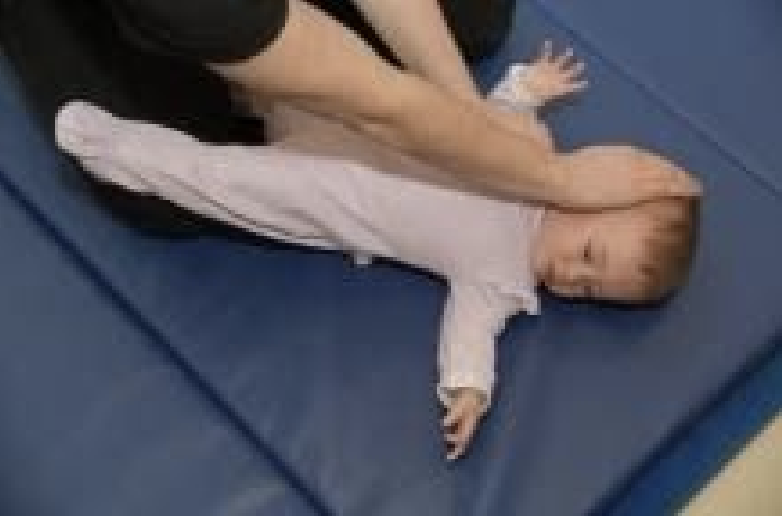
-
Football Carry
For right torticollis (head tilts to the right): Place your right elbow between your baby’s right ear and right shoulder. Place your left hand on your baby’s right shoulder and gently pull down for an added stretch.
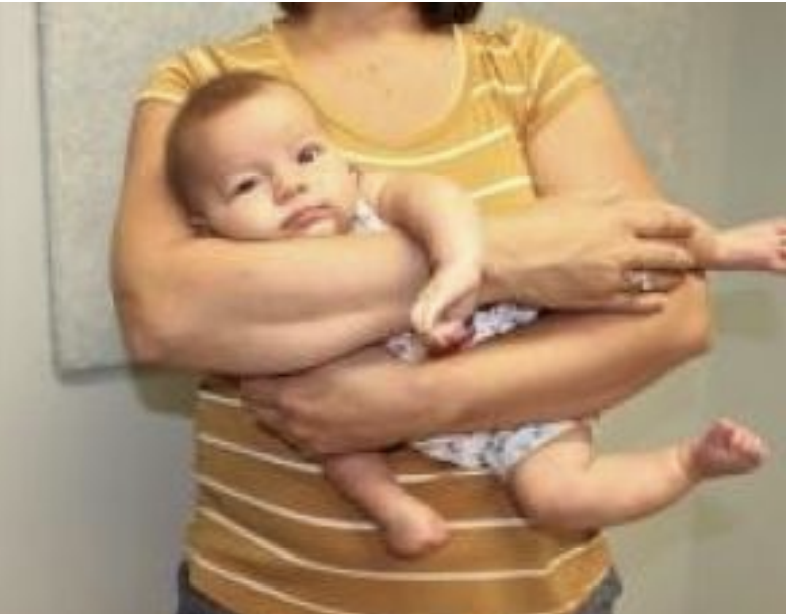
For left torticollis (head tilts to the left): Place your left elbow between your baby’s left ear and right shoulder. Place your right hand on your baby’s left shoulder and gently pull down for an added stretch.


Blog by:
Jenny K. – PTA
(Physical Therapist Assistant)

